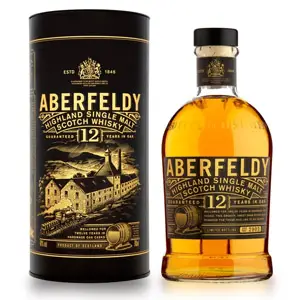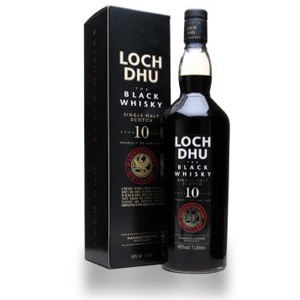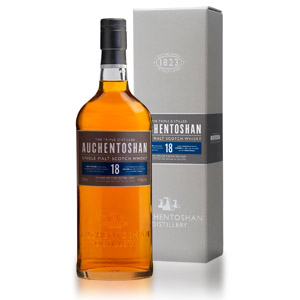I’ve been thinking about this statement recently, which shows up all the time in blogs, whisky books, magazines, and forums:
“Big whisky (and other spirits) brands strive foremost for consistency in their product.”
This statement is often used when discussing large-scale vatting procedures, wood management, blending and sourcing whiskies for blends, pricing and distribution, and so on. It seems to be a pretty much established statement of fact that big producers care very much about maintaining consistency, for the health of their brand and the loyalty of their customers. It’s certainly all over their marketing materials. It is also used for the explanation of a lot of less-than-ideal practices in the industry, such as avoiding experimentation, vatting together good casks with bad, covering up mistakes via vatting, using a large number of sources for a blend to discourage individual or unique flavors, and blending to target a (bland) middle-ground that is considered best for all palates. It also seems to be particular to the larger brands, which makes sense when you consider that consistency is most important to mainstream bartenders and restaurants, who want to be able to rely on a very specific flavor profile to make, in turn, consistent drinks. It also makes sense when you consider that the larger the company is, the more cost-saving efficiencies can be implemented in the name of efficiency (as opposed to doing things for the sake of quality).
Consider, for example, the fact that all whisky producers make “good” barrels and “bad” barrels, due to a wide (and usually uncontrollable) number of variables in whisky maturation. A quality-first company might sell off the “bad” barrels wholesale and only use the “good” barrels for vatting, while a “consistency” (read: profit) -first company might vat together the good and bad (and, of course, sell off the “best” as single-barrel expressions) and sell the whole thing for a price based on the historical average quality. If, in the course of many batches, more “bad” barrels start to appear, quality goes down and price remains the same. This is exacerbated by larger companies, who have an efficiency interest in not closely examining every single barrel. Such companies are also more likely (in fact are incentivized by the mitigating effects of large-scale vatting) to cut corners in the face of rising costs.
After a long time of accepting the consistency message myself, I’ve lately begun to think of it as an illusion. While it’s obvious that single-cask expressions have little or no consistency batch-to-batch due to the nature of single barrel production, and some brands like Glenrothes actually celebrate the individuality and variation of each batch release, I’ve seen many many examples of large “consistent” brands slowly losing quality over time, to the extent that consumers have begun to notice.
I’ve heard firsthand (from readers) about quality degradations in all of the mainstream blends, some bourbons, Lagavulin, Macallan, Bruichladdich, and elsewhere. I’ve had a large number of whisky consumers emailing me to ask if I’d noticed quality degradations in their favorite brands – often blends. I’ve had more than a few people complaining that the product had declined so much that they’d ceased buying it.
It seems to me that if an entire industry has put consistency (not price, quality, flavor, or volume) as priority number one and yet is seeing widespread complaints about lowering quality – something’s fishy. It should be considered, however, that as human beings are victim to several sensory biases, these accounts are not necessarily evidence of actual descending quality. As someone becomes accustomed to a bottle, a second or third bottle may appear bland due to familiarity. Also, if someone’s palate is disturbed (from food, previous drink, illness, weather) or if the bottle is mishandled (left open too long, left in direct light, poured and let sit too long, from a bad batch, shipped with a bad seal, etc.), it is natural human bias to attribute a drop in quality to the product, not to the context.
Consistency in whisky has never been particularly important to me – it certainly isn’t as big a deal in wine, where variation is so much the norm that yearly quality calendars and charts are published, and hence the expression “2003 was a good year in Bordeaux” – but is this just another whisky marketing ploy that turns out to be so much hogwash in the face of profits? Is the disappearance of available stock due to demand surge causing this severe a quality downslope, despite corresponding price increases? Is the quality degradation intentional, and being managed slowly over time in an attempt to keep consumers from noticing the “watering down” of their “consistent” products?
I have my suspicions about the answers to those questions.
So what can we do, as whisky consumers in the face of an unprovable industry-wide trend? Simple. Rely on your own tastes. If your new bottle of your favorite brand disappoints, give it a few more tries (spread over several days to eliminate context), and then try something new! Vote with your wallet and with your taste buds. Also, realize that constricting stocks and rising materials and fuel prices are going to squeeze down the quality (and squeeze up the price) of even the most conscientious brand, but that doesn’t mean you have to settle for bad whisky passed off as a “consistent”.






I agree with you. Another issue we are seeing recently (as demand rises) is that the producers are putting what they have on the shelves (whether it’s young and NAS or not). Common thought/knowledge is that producers put out better whiskies when times are slow in order to gain market share (why include bad casks, if there’s not even demand for the good casks). It’ll be interesting to see what happens to Glendronach’s 12-year old in a year or two. I’ve read the distillery was closed from ’96-2002 – which means the current 12-year old has whisky from PRIOR to ’97 in it. So it’s a minimum of 16-17 years…right? They started producing in 2002, so in 2014, they will have 12-year old whisky to put in their bottles. I’m sure they’ll vat it with older whiskies to preserve the ‘Consistency’…but you can see where this is likely to go. Not that old is ALWAYS better…but you get the idea. Cheers. Great blog.
excellent blog. I love your reviews, this article I thought was fantastic.
All of this whisky boom (all of the illusions) is getting quite tiring to me at least Nathan. Im not going to go crazy stocking up on every new kilchoman, ardbeg, karazuiwa, or any other trendy whisky. Im just buying and trying as much variety as possible (except for binging on laphroaig cask strength during winter) within a budget and dont have any unopened bottles in my cabinets. I can’t be bothered with the whiskywhiskywhiskydotcom recent purchases thread, its just ridiculous. Yes, whisky is delicious, but there are more important things in life. All just an opinion.
Bryan, Agreed. I personally don’t “bunker” or stock up on whisky. I simply maintain the same budget that I had before the “boom”, and explore whiskies that reside in it. If a whisky company releases a 10 year-old special edition for $120, that makes an easy decision for me – pass. If a new blend hits the stage at $30 and has a good reputation, also an easy decision. I’m always looking for whiskies in my price “sweet spot”, even if those whiskies are a step down from what was available 5 years ago. I do maintain a small backlog of unopened bottles – but that’s mostly because I buy faster than I drink… not due to any kind of strategy. 🙂
Great article! With consistency, I’ve seen repeated allegations that Johnnie Walker Red Label used to be much better than it is now. I’m guessing periodically Diageo gives its blenders marching orders to use cheaper ingredients in JW Red and JW Black and hopes consumers don’t notice so as to maintain the illusion of consistency.
My favorite story about consistency in whiskey is the man who swore off his favorite brand of single malt because he was sure they were messing with it to increase profits. The story was told by the man’s son, who when it happened was a teenager sneaking drinks from his father’s liquor cabinet and adding water so he wouldn’t notice.